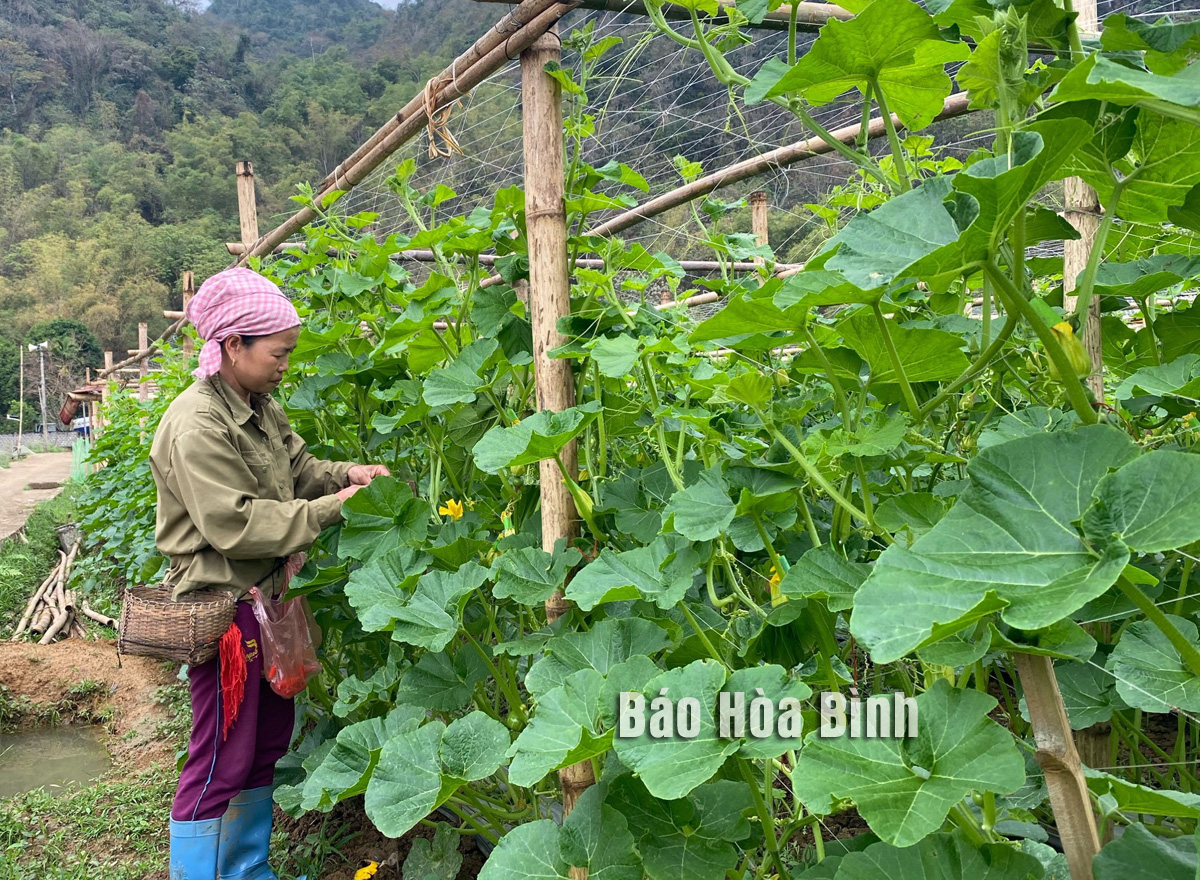
Various emulation movements have been rolled out in Mai Chau district of Hoa Binh province over the past years, encouraging local farmers to promote business and production for sustainable poverty alleviation as well as restructuring of crops and livestock for better incomes. The movements have attracted enthusiastic response from members of the district farmers’ union, particularly ethnic people.
A farmer in Van
Mai commune of Mai Chau district has gained better income thanks to crop
restructuring.
Ha Van Sem, a Thai ethnic minority man in Na
Chieng hamlet, Na Phon commune, was named as one of the 100 most excellent
farmers in the country in 2023. He began his tourism business in 2017 then
decided to expand to high-end resort model by building more stilt houses and
facilities to serve tourists with concessional loans from the local
authorities. He now owns a spacious homestay with quality accommodations that
fetch 2 million VND (78.6 USD) per day and night for each stilt house.
Sem said thanks to support from the local
sectors, especially the farmers’ unions at all levels, he had opportunities to
engage in several vocational training courses on tour guides, restaurant
management, cooking and market demand.
During 2021-2023, his homestay gained an average
of 1.3 billion VND in revenue and up to 800 million VND in profit a year.
Over the past time, the district farmers’ union
has worked closely with its members so as to provide them with rational support
measures for their business development. It has encouraged local farmers to
join the excellent household business movement and the emulation movement to
build new-style rural areas.
The farmers’ unions at all levels have joined
hands with competent authorities to arrange training courses on the transfer of
the state-of-the-art science technology to members, as well as field trips to
farms with outstanding agricultural models, while supporting the farmers with
capital goods and concessional loans.
With the movement of excellent farmers with role
models of production and business put in place, many farmers have applied
technological advances into production, helping them gain up to 1 billion VND
in revenue a year.
According to Chairman of the district farmers’
union Pham The Anh, many good economic models have been developed since the
movement was rolled out, helping to improve the livelihoods of the ethnic
minority people and shortening economic development gap between areas in the
district.
With just over a month left until the school summer break, students are eagerly anticipating a period of rest and fun after a year of academic pressure. To provide a healthy environment for the physical development, in addition to the classes that foster talents and enhance the academic knowledge, sports and physical activities continue to attract a large number of children and teenagers.
On April 17th, Hoa Binh Provincial Museum organized a program to promote and introduce the outstanding values of "Hoa Binh Culture” at the Boarding Secondary and High School for ethnic minority students in Mai Chau District.
The Hoa Binh College of Technical Technology, in collaboration with the Hoa Binh Technical and Economic College and the provincial Association of Literature and Arts, hosted a gathering on April 15 to celebrate Laos’ traditional Bunpimay (New Year) Festival 2025 and debut the new book "Nguoi Muong o ban Don” (Muong people in Don village).
In the millennia-long history of national construction and safeguarding, people of all ethnic groups in Hoa Binh have been united and closely bound together to overcome all difficulties and challenges, standing alongside the entire Vietnamese people throughout the history of building and defending the country.
Living green is a healthy, positive, and sustainable lifestyle that not only helps protect
the environment and quality of life but also conserves natural resources and ecosystems.
Among the many ways to embrace this lifestyle, reducing plastic consumption is one of the most impactful.
The women's unions at all levels in Kim Boi district have been making significant contributions to the movement of building cultural life in the local community.
The movement helps improve rural look and the spiritual and material lives of local residents.



